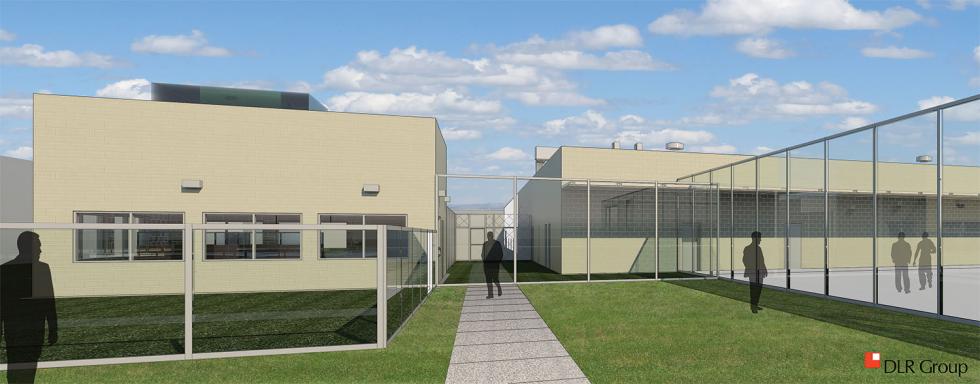California prisons weren’t built yesterday. Most of these aging structures date back to the middle of last century, relics of a time when the prison population hovered around 10,000 — just a fraction of the bloated 110,000 we have now.
To say these facilities are overcrowded would be a gross understatement. From 1982 to 2000, the state’s prison population, the biggest in the nation, spiked 500 percent. And inside those decrepit walls, the conditions are so horrific that in 2011, the U.S. Supreme Court ruled that California prisons violated prisoners’ Eighth Amendment rights to adequate health care.
“Crowding creates unsafe and unsanitary conditions that hamper effective delivery of medical and mental health care,” noted the Brown v. Plata syllabus. “It also promotes unrest and violence and can cause prisoners with latent mental illnesses to worsen and develop overt symptoms. Increased violence requires increased reliance on lockdowns to keep order, and lockdowns further impede the effective delivery of care.”
It’s a vicious cycle, and the high court gave Gov. Jerry Brown until February 2016 to fix it by reducing the state’s prison population by some 33,000 inmates. Through a combination of new construction and historic reforms, the state got the job done ahead of schedule. In March, the prison population dropped below the mandated capacity limit. But many of those would-be prisoners wound up in county jails, which now also face population burdens. Like the prisons, many county jails are also decades old and desperately need structural upgrades.
For the past five years, architects, engineers and contractors in the civic arena have had their hands full with contracts, not just for jails, but also for aging courthouses that must be modernized to meet current needs.
“The population will become so huge, the courts can’t keep up,” says Rick Bruining, project manager and detention specialist at Roebbelen Contracting Inc. in El Dorado Hills. “There will be more crime, more traffic violations, more misdemeanors, more felonies. If you have a 10-car town, you don’t need a big court system, but California has a twelfth of the (nation’s) population. They’re doubling, even tripling the size of the courts to try and handle the influx.”
But with specialists in the civic arena already spread thin, local firms are grappling with how to handle the load ahead.
MAXIMUM CAPACITY
Following the Supreme Court ruling in 2011, Brown signed Assembly Bill 109, the basis for what would become known as realignment. The objective? To stop low-level inmates from cycling in and out of prisons. Inmates in prison at the time could not be transferred to lower-level jails, but realignment changed that, allowing non-violent, non-serious and non-sex-related offenders to serve their sentences in jail or be supervised out of custody. Last year, California voters passed Proposition 47, reducing certain crimes like drug possession and grand theft from felonies to misdemeanors. These and other measures decreased the inmate population, but the problems haven’t exactly gone away.
Last year’s state corrections budget included $500 million to fund the expansion of county jails (in addition to the jail expansion funds of $1.2 billion from years prior). But how that money should be allocated is debatable (Will adding more jails ease overcrowding? Should funds go toward community-based programs created to help people stay out of jail?), and counties are developing proposals to claim a piece of that multi-million-dollar pie.
Last year’s state corrections budget included $500 million to fund the expansion of county jails (in addition to the jail expansion funds of $1.2 billion from years prior. But how that money should be allocated is debatable.
The pot is divided into three categories, depending on the county’s size: $100 million for small counties, $160 million for medium-sized and $240 million for large counties, like Sacramento. Toward year’s end, the counties deemed worthy will be awarded money to begin construction next year, though designs are already in progress.
Nacht & Lewis, a Sacramento architecture firm, is currently designing a jail in Lake County and another in Napa. Most of the county jails are overdue for makeover via expansion or full-blown replacement, according to Eric Fadness, who leads the justice facilities design team for the firm. He says many jails were configured in an old-style, linear model that was not designed to house the higher-security inmates that counties now host. They are inefficient to operate, challenging for staff to manage and don’t sufficiently segregate the various levels of inmates. Additionally, many older facilities lack space for support services that could help these inmates get back on their feet: mental health treatment, life skills and educational programs.
“How can these jails provide services when they’re so overcrowded?” Fadness says. “Mental health treatment, programs where inmates can earn their GED or learn a skill and medical services — funding is provided by the state to counties who can prove a need for space, additions or new jails that resolve these issues.”
Related: Full Court Press
County courthouses are in similar shape. The older ones are 40 years old. Some need minor fixes, such as lock upgrades. For others, municipalities want the complete high-tech overhaul: CCTV, access control, blast-proof windows and doors. “After 9/11, they’re going to modernize them,” Bruining says. “They’re making them more like a fortress.”
There are about 100 courthouse projects identified for development in California. That includes a 405,500-square-foot criminal courthouse coming soon to the edge of the Sacramento railyards. But with all these projects underway, the number of professionals with jail and court design and construction experience remains limited.
PRESSURE BUILDING
Since the recession, the architecture industry has shrunk. Smaller firms were bought by larger firms. There are fewer general contractors and fewer architecture and engineering firms chasing work. The short supply hasn’t been much of a problem yet, but that may soon change.
“We’re starting to feel the pressure,” Fadness says. “We need to start hiring to fill the backlog of work. We’re noticing that other firms are hiring as well. We’re concerned about the availability of enough architects to handle the workload in coming years, to see projects all the way through.”
Most projects range in costs from about $20 million to $100 million. A $50 million project requires a team of about five, including the project manager, project architect and technical staff to support the production of drawings. Like courthouses, jails are complex structures that require a certain expertise. There aren’t a lot of architects that design them, so finding skilled labor is an ongoing challenge.
Courthouses and correctional facilities must meet strict design standards, which are published by the U.S. General Services Administration and dictate everything from finish materials and environmental systems to audio-visual design requirements and acoustic performance. (In U.S. courts, the “ideal reverberation time in a courtroom is 0.6 to 0.7 seconds,” the guidelines say.) Few architects know all these details, which makes correctional design a small niche market.
“From a design standpoint, it is stressful,” says Darrell Stelling, an architect who leads the Justice and Civic sector with DLR Group. “There are not a lot of experts in this field. A lot of firms are having trouble keeping up with the workflow.”
DLR Group is at work on an $80 million jail addition for the Rio Cosumnes Correctional Center. Since DLR is an international firm, Stelling has been able to bring in experienced architects from Omaha, Chicago, Phoenix and Washington, D.C. to support correctional projects.
A NEW MODEL?
It was a different kind of collaboration that led to one of the state’s most recent groundbreaking projects: the California Health Care Facility near Stockton. Overseen by the California Department of Corrections and Rehabilitation, this $539 million project was a joint venture between McCarthy Building Cos. and Clark Construction along with architecture firms HDR and HGA. The medical detention facility is 1.2 million square feet and designed to house 1,722
patient-inmates. The Health Care Facility was completed in 2013 after an aggressive, 18-month fast-track process involving numerous parties.
“From a design standpoint, it is stressful. There are not a lot of experts in this field. A lot of firms are having trouble keeping up with the workflow.” Darrell Stelling, principal architect, DLR Group
“Not only are you dealing with people in charge of custody, but also dealing with doctors, mental health practitioners, the state fire marshal, along with people who know about building code,” says Ryan Heeter, senior vice president of operations with McCarthy. “Getting all those people in a room was very difficult to do.”
But they managed to bring all two dozen stakeholders together in a Rancho Cordova office, not only for one meeting but for several months, to make sure everyone was on the same page. At its peak, the team was putting in place $60 million per month and had more than 1,300 workers on-site. Overall, Heeter says, HCF Stockton represents a new model for expediting large-scale projects.
Could this collaborative approach translate to the civic arena? Possibly. But with 58 counties in California, Heeter doesn’t believe there will be enough money — or enough firms — to handle all the demands for jail and courthouse construction.
“As the population grows, the demand is going to grow,” he says. “Hopefully, as we look down the road, we can start to see improvements in some of those rehabilitation programs so we’re not just building more prisons and throwing more people into them. Whatever the solution ends up being, there is going to be built space required.”






Comments
Our leaders must rethink the use of jails to control drug addicts and related distribution activities. For those who behave as if they need psychoactive non-prescription drugs, correction under a medical model may be more effective and, perhaps, less costly. Anyone stupid enough to use methamphetamine must be mentally ill (e.g. self-destructive), because meth causes permanent brain damage and premature death.
What we need is an educational system and legislature with wise people working who recognize the need for good, relevant training programs that 1) Provide young people, who have dropped out of school but want to work, affordable (better yet free) training programs to assist them to become employable in today's world; 2) Programs in our jails and prisons that educate and train individuals who will be allowed back into society so that they do not have to re-offend in order to survive; 3) Make adult education a priority, not just in our junior colleges but with schools such as the Charles A. Jones Center on Lemon Hill; 4) Stop social promotions in our schools and make students learn the material or suffer the consequences of remaining in that grade until they meet all of the requirements. Our youth must learn that in the real world you do not get paid if you do not do the work and you should not progress in school (get paid) if you do not do the work. Lastly, all able bodied persons on welfare should be required to perform some type of community service hours to earn their check.